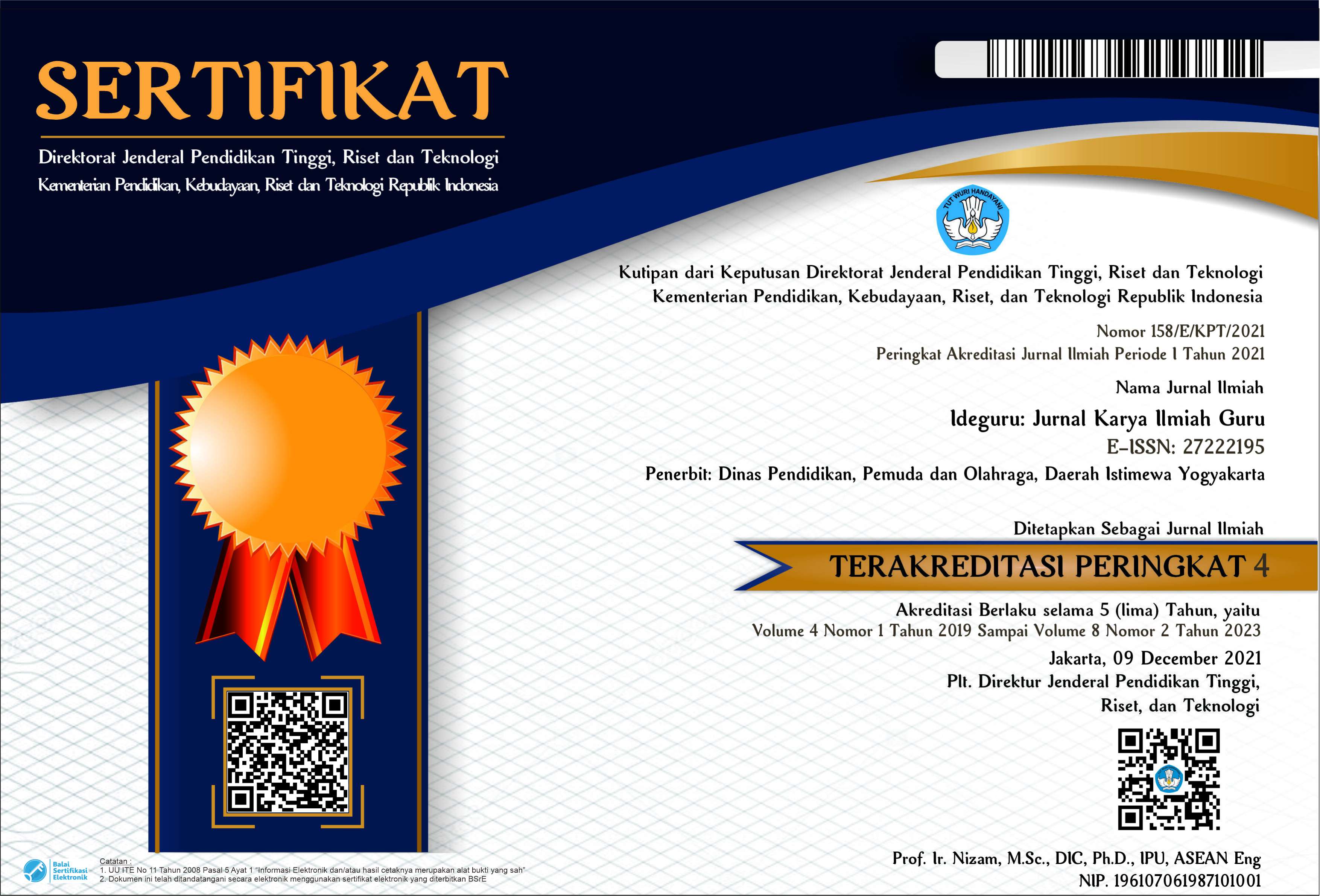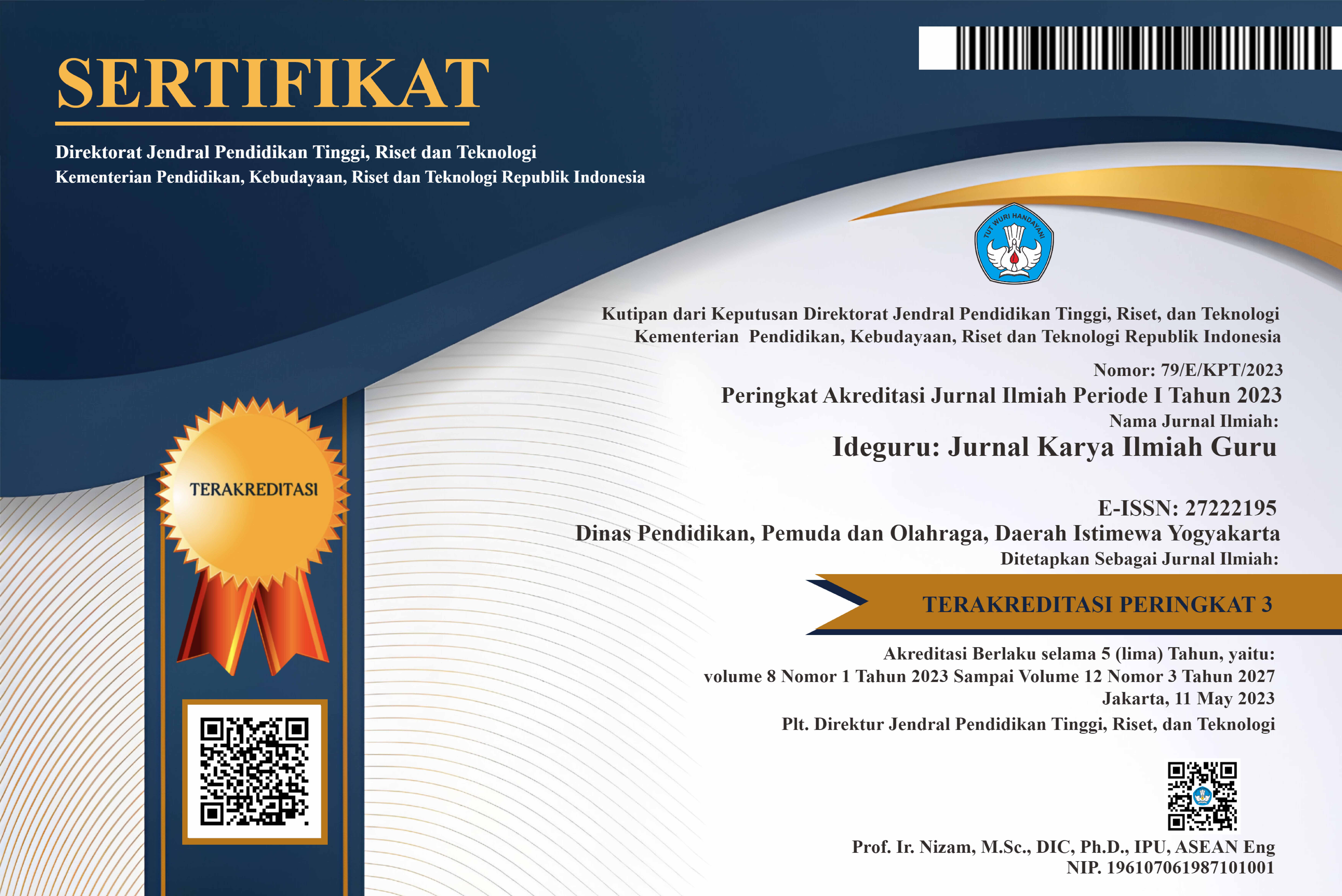Penerapan Model Pembelajaran Self Organized Learning Environments (SOLE) untuk Meningkatkan Pemahaman Materi Polimer
Abstrak
Penelitian ini bertujuan untuk: 1) mengetahui deskripsi penerapan model pembelajaran self organized learning environments (SOLE) pada materi polimer untuk siswa kelas X RPL di SMK N 1 Sanden, 2) menguji peningkatkan pemahaman materi polimer melalui penerapan model pembelajaran self organized learning environments (SOLE) siswa kelas X RPL di SMK N 1 Sanden. Penelitian dilakukan di SMK N Sanden, dengan subjek penelitian kelas X RPL. Penelitian ini menggunakan penelitian tindakan kelas, terdiri dari dua siklus dan tiap-tiap siklus terdiri dari tiga pertemuan. Teknik pengumpulan data menggunakan tes. Tes digunakan untuk mengambil data pemahaman materi Polimer. Data pemahaman materi Polimer dianalisis dengan analisis deskriptif kuantitatif. Hasil penelitian menunjukkan bahwa penerapan model pembelajaran self organized learning environments (SOLE) dapat meningkatkan pemahaman materi polimer siswa kelas X RPL di SMK N 1 Sanden dengan langkah-langkah: (1) Question atau Pertanyaan. Guru memberikan pertanyaan ke siswa melalui format yang berisi pertanyaan yang di bagikan melalui WA group. (2) Investigate atau Investigasi. Siswa melakukan investigasi atau pencarian jawaban lewat internet. Jawaban yang telah diperoleh siswa ditulis dibuku, kemudian difoto dan dishare ke WA guru lewat jaringan pribadi. (3) Review atau Mencermati. Guru melakukan review jawaban siswa dengan cara mengunduh jawaban siswa yang dishare lewat jaringan pribadi. Jawaban siswa yang telah direview dikembalikan ke siswa dengan cara difoto lewat WA jalur pribadi siswa. Penerapan model pembelajaran Self Organized Learning Environments (SOLE) dapat meningkatkan pemahaman materi polimer siswa kelas X RPL di SMK N 1 Sanden dari persentase ketuntasan klasikal 57,89% pada siklus I, menjadi 73,68% pada siklus II dan telah mencapai indikator keberhasilan penelitian.
Data Unduhan PDF
Copyright (c) 2021 Sri Suciati

This work is licensed under a Creative Commons Attribution 4.0 International License.

 DOI:
DOI:













